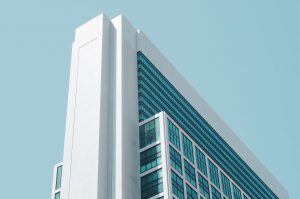Our works are categorized into five different types of construction: fire-resistive, non-combustible, ordinary, heavy timber, and wood-framed.
Type I Construction: Fire Resistive
This category applies to any building that stands over 75 feet tall. This applies to all high-rise housing and commercial space. That includes apartment buildings, offices, and hotels. These buildings are designed to withstand high temperatures for a long time without collapsing. Beyond that, all structural materials are non-combustible. Walls, floors, and roofs are constructed with reinforced concrete and protected steel. While these features make these buildings extremely durable, it also increases construction costs.
Type II Construction: Non-Combustible
Similar to the Type 1 buildings, Type 2 buildings contain non-combustible walls, partitions, columns, floors, and roofs. Though these structures typically contain fire suppression systems, they are not often protected with fire-resistive coatings and are prone to collapse. They typically contain metal floors and metal roofs with masonry or tilt-slab walls.
Type III Construction: Ordinary
Also known as brick-and-joist structures, Type III buildings consist of either tilt-slap or reinforced masonry walls. These materials are non-combustible. That is to say, some of the interior structural elements (frames, floor, ceilings, etc.) are made with wood or combustible materials. This kind of construction can apply to both old and new buildings. Old buildings will generally contain conventionally framed roofs, while newer units are typically built with lightweight roof systems.
Type IV Construction: Heavy Timber
Type IV buildings are largely constructed using large pieces of lumber, connected using metal plates and bolts. This was a common practice before 1960, which makes heavy timber construction so easy to spot. Old churches, factories, and barns typically fall under this category.
Type V Construction: Wood-Frame
Type V buildings are the most combustible construction type on this list. It is the only category of construction that allows combustible exterior walls as well as combustible structural members on the interior. Frames, walls, floors, and roofs are made entirely or partly out of wood. These building elements are cheaper to develop and increasingly common in the construction of single-family homes and garages.


